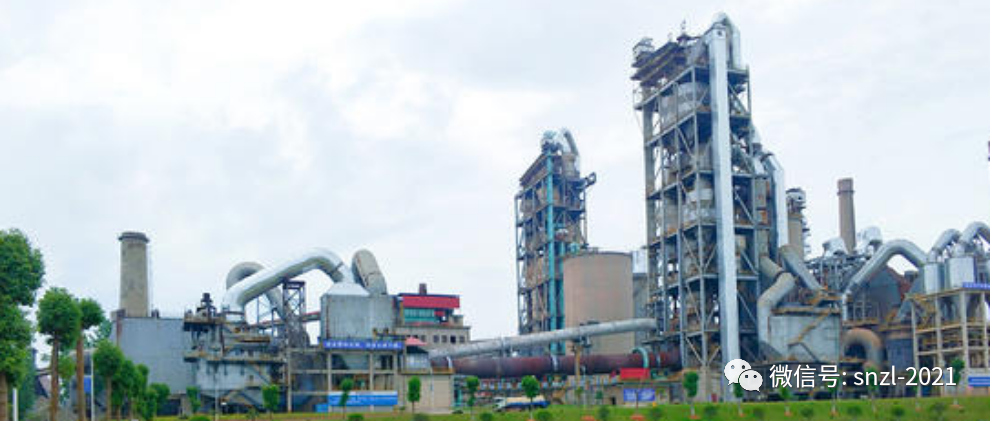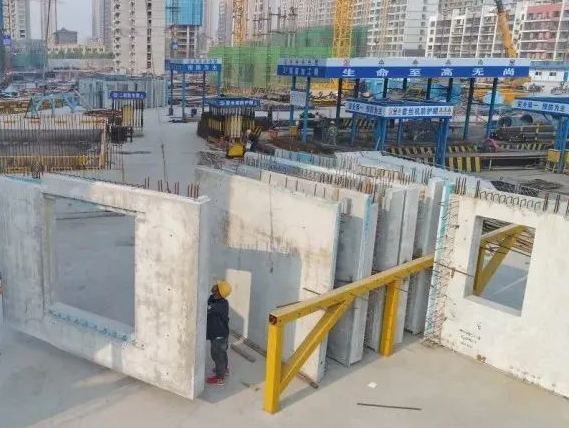Effect of material moisture on cement production
The impact of material moisture on waste heat power generation is achieved by utilizing the waste heat from the kiln head and tail.
3.
It is estimated that each 1% increase in pulverized coal moisture will increase the coal consumption per unit clinker by 1%.
2.
Only by effectively utilizing the excess heat from the kiln system can the power generation capacity of tons of clinker be maximized.
1.
The moisture content of pulverized coal has a serious impact on the lower calorific value of coal.
It is easy to form loops and crusts in the kiln, affecting ventilation in the kiln, and other adverse conditions, resulting in a decline in clinker output, As a result, coal consumption soared.
Its strength is reduced by 2-3 MPa.
When the moisture is too high, the grinding body and the lining plate surface will be adhered by fine powder, forming a “buffer cushion”, reducing the impact of the grinding body on the material, increasing the grinding resistance, and reducing the mill output.

The laboratory determined that the specific surface area of the cement was 365m2/kg, and the 3-day strength was 19MPa.
Some data indicate that every 1% increase in moisture in the cement.
However, when the cement was delivered with a 28-day strength, only 41MPa was lower than the national standard of 42.5MPa.
At a certain temperature, The relationship between material moisture and the adhesion of materials in the mill is shown in the following table: temperature ℃ water content% raw material adhesion g cement adhesion g 1001.0/85.01002.095.501003.3114.0126.501004.6117.00136.001006.0117.50/From the above table, it can be seen that at a temperature of 100 ° C and other conditions remain unchanged, raw material moisture increases from 2% to 6%, and cement moisture increases from 1% to 4.6%.
Therefore, it is crucial to strictly control the moisture content of the ground cement.
.
According to relevant data testing, every 1% increase in moisture content decreases the combustion value by 1%, and the flame temperature decreases by 10-20 ℃; At the same time, when pulverized coal with high moisture content enters the kiln for calcination, it first needs to absorb a large amount of heat due to moisture evaporation, and a large amount of water vapor is enveloped around the coal, preventing air from entering the combustion zone, resulting in incomplete combustion of pulverized coal.

The daily loss is about 41600 kwh, calculated at 0.50 yuan per kilowatt hour electricity price, and the daily loss is more than 20000 yuan.
The control of moisture content of incoming raw and combustible materials, as well as the level of moisture control of semi-finished and finished products, plays a significant role in restricting the overall cement production, It has a significant impact on the production cost control and economic benefits of cement.
For enterprises with good management level, conditions such as good weather are available, Good moisture control of incoming materials has a small impact on mill output; If the opposite conditions are not met and the comprehensive moisture content of the material is high, the output of the mill will decrease.
Taking two 2500 ton/day clinker production lines equipped with a 9MW waste heat power generation system as an example, when the materials are relatively dry, that is, the comprehensive moisture content of the incoming materials is below 1.0%, and all hot air passes through the kiln tail SP boiler, the power generation capacity can reach about 9.8MWh, and the power generation capacity per ton of clinker can reach 45kwh; In the rainy season, the comprehensive moisture content of the incoming materials reaches over 6%.
The influence of cement moisture is also crucial, and cement moisture must be strictly controlled within a reasonable range.

The adhesion of raw material and cement in the mill gradually increases.
The influence of moisture on cement quality can be influenced by many factors, such as the strength of clinker, specific surface area, particle gradation, cylindricity, and additive content of cement.
In order to increase clinker output, stabilize the stable operation of the kiln system, and reduce the coal consumption index per unit clinker, all measures should be taken to reduce the moisture content of pulverized coal as much as possible.

The flame is not concentrated, the temperature of the firing zone is low, and it is difficult to calcine high-quality clinker.

Below are some views on the impact factors and hazards of moisture on cement production.

During the production of P.O42.5 cement by a cement enterprise, in order to reduce the grinding temperature, water was sprayed on the material feeding belt, and a water spraying device was added inside the mill.

It was detected that the moisture content of the cement was as high as 0.8%, exceeding the control index of 0.4%, affecting the strength of the cement; At the same time, high moisture content can also cause adhesion, arching, and unfavorable ash deposition on the warehouse wall, which can also affect the micro amount of moisture in the cement and reduce the strength of the cement.

When the material moisture reaches a certain proportion, it becomes the main factor affecting the grindability of materials and mill output.
During the cement production process, there are various factors that restrict the normal production of cement, such as the quality of raw and combustible materials, the status of process equipment, and the quality of personnel.
However, in order to reduce the moisture content of raw meal and pulverized coal, only by adjusting the bypass valves of the SP boiler and AQC boiler can the hot air temperature for grinding and drying of materials be increased and the heat entering the boiler be reduced, The power generation capacity per ton of clinker will be significantly reduced.

It seems that the impact of water on waste heat power generation is also quite significant.
During production control, material moisture is restricted by factors such as the conditions of incoming raw materials, weather changes, and production management level.

4.
The impact of material moisture on cement production cannot be ignored.

The power generation per ton of clinker is only 37 kwh, and the power generation per ton of clinker is about 8 kwh lower.
The impact of material moisture on mill production The impact of moisture content on the grindability of raw materials.

The stronger the adhesion, the lower the mill output; Therefore, the moisture content of the material should be strictly controlled, and the comprehensive moisture content of the raw material mill should be controlled below 2%; The comprehensive moisture content of cement entering the mill shall be controlled below 1.0%.
In order to ensure the drying of the materials, it is necessary to keep the bypass valve opening of the SP boiler at 30%, and the power generation can only be around 8.0 MWh.
Taking the intermediate discharge drying mill as an example, when the comprehensive moisture content of the incoming mill reaches more than 2%, there will be phenomena such as clogging of the separator plate, ball paste, and insufficient ventilation in the mill; In order to increase the drying capacity of materials, it is necessary to increase the grinding temperature so that the moisture can evaporate in the drying bin as much as possible to avoid excessive temperature of the grinding material.
The influence of pulverized coal moisture on coal consumption The moisture of coal is divided into internal water and external water, which can be reduced by increasing the air temperature of the coal mill; The internal moisture needs to be at 110 ℃ to evaporate.

